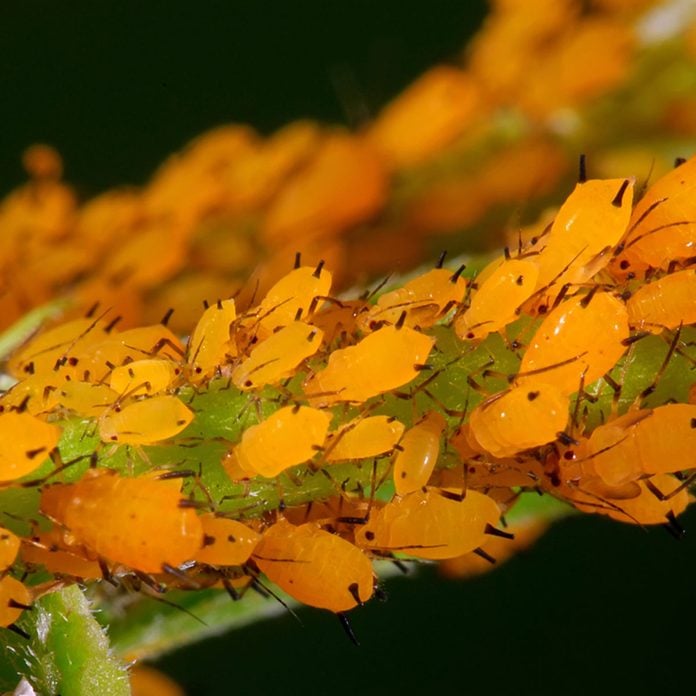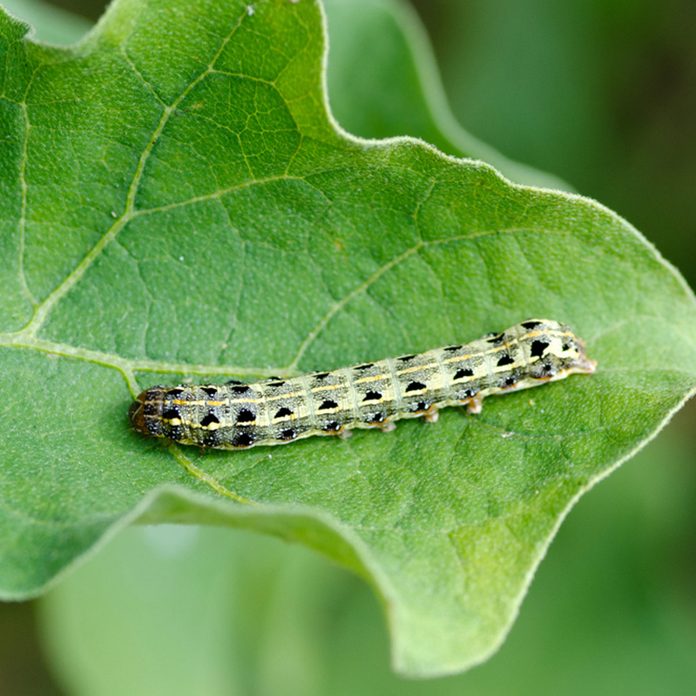How to Get Rid of the 10 Worst Insects for Your Garden - Family Handyman
1 / 10

Aphids
One of the most common plant pests out there, something that anyone who's even grown tomatoes will certainly be familiar with, but they can affect almost anything in your garden.
These 1/6-inch pear-shaped creatures pierce plant tissues to suck out sap, causing one of the most common plant diseases. Affected plants often form puckered leaves, show stunted growth, and can die without treatment. Moreover, the honeydew (a sweet, sticky substance secreted by aphids) promotes the growth of sooty mold and attracts ants, which protect the aphids because they want the honeydew.
How to get rid of aphids:
Wash plants with a strong spray of water to dislodge aphids, or remove and destroy affected plant parts. Safe, natural pest control remedies include spraying with horticultural oil (petroleum- or vegetable-based oil used to smother insects), insecticidal soap or neem (insecticide made from a tropical tree by the same name). You can also buy lady beetles, which feed on aphids.
Editor's Tip: If you are an avid vegetable gardener, you likely battle garden pests regularly. Learn how you can try the huckleberry plant hack yourself to preserve your plants without pesticides.
2 / 10

Cutworms
Cutworms are fat, one-inch-long moth larvae that hide beneath leaves or within the top layer of soil during the day and feed on plants at night. They typically attack stems, the first part of a plant they encounter, so if a newly planted seedling has been felled like a tree in the forest, that's a sign of cutworms.
How to get rid of cutworms:
Protect young seedlings with collars made from plastic drinking cups or cardboard rolls from toilet paper. You can also cultivate soil shallowly before planting and remove the curled up cutworms by hand (or let robins do the dirty work). Another solution is to set seedlings out a few weeks later, when they've grown thicker stems to resist cutworms.
Comments
Post a Comment